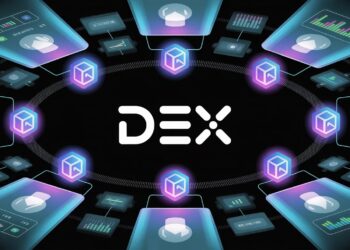Introduction
Blockchain networks rely on consensus mechanisms to keep their data accurate and secure. These systems help verify transactions and prevent cheating. Proof of Stake (PoS) has gained popularity because it uses less energy than traditional methods. It’s faster, cheaper, and more eco-friendly. But now, a new system called Leased Proof of Stake (LPoS) is emerging. LPoS offers fresh ways for people to participate in blockchain security without owning large amounts of tokens. This article will explain what Leased Proof of Stake is, how it works, and why it matters for the future of blockchain.
Understanding Blockchain Consensus Mechanisms
What Is a Consensus Mechanism?
A consensus mechanism is a set of rules that keeps blockchain networks honest. It makes sure everyone agrees on the data stored. Popular consensus methods include Proof of Work (PoW), Proof of Stake (PoS), and Delegated Proof of Stake (DPoS). Each one has its way of deciding who gets to add new data.
Transition from PoW to PoS
PoW, used by Bitcoin, demands a lot of energy and hardware. The process involves miners solving complex puzzles. This makes it slow and costly, especially as the network grows. PoS changes that. Instead of solving puzzles, validators are chosen based on how many tokens they hold and are willing to “stake.” This use of staking reduces energy waste and improves scalability. More and more projects are switching to PoS as a result. Globally, PoS adoption is climbing fast, with many new platforms choosing this route to improve efficiency and decentralization.
What Is Leased Proof of Stake (LPoS)?
Definition and Core Concept
Leased Proof of Stake is a variation of PoS. It allows token owners to lease their tokens to others without giving away ownership. Think of it like renting a car rather than selling it. The renter can use the car, but the owner still owns it fully. Similarly, in LPoS, lessees lease tokens to validators or nodes to help them secure the network.
How LPoS Differs from Traditional PoS
While PoS requires validators to hold a lot of tokens directly, LPoS makes it easier to participate. You don’t need to own large amounts of tokens yourself. Instead, you can lease your tokens to a validator node. This setup increases participation, spreads out voting power, and makes networks more decentralized. It also lowers the barrier for newcomers to become validators, opening the door for smaller investors.
Real-World Example
The Waves blockchain is a good example of LPoS in action. It allows users to lease tokens easily, expanding the network’s security and governance. Waves has seen increased network stability, faster transactions, and more active community participation. This shows how LPoS can help grow blockchain ecosystems.
How Leased Proof of Stake Works in Practice
The Leasing Process
Leasing in LPoS involves simple steps. First, a token holder, or lessee, agrees to lease their tokens to a validator or node. They often do this through a smart contract or a trusted platform. The validator then uses these leased tokens to increase their staking weight. Meanwhile, the lessee earns a portion of the staking rewards without losing ownership of their tokens. This process creates a win-win situation for both.
Incentives and Rewards
Validators who secure the network earn rewards from transaction fees and new token issuance. Plus, lessees also get a share of these rewards. Leasing encourages validators to act honestly since their staking weight, boosted by leased tokens, increases their chances of being chosen to validate transactions. This makes the network more secure overall.
Security and Fairness
Security measures include limits on how many tokens can be leased to prevent centralization. Many systems also monitor and penalize bad actors. Leasing generally increases the network’s resilience by spreading out staking power and reducing the risk of a few large players dominating the network.
Benefits of Leased Proof of Stake
Enhanced Decentralization
By allowing small token holders to lease their tokens, LPoS spreads control. This means more people can participate in governance. It also reduces the risk of power falling into just a few hands.
Increased Network Security
More staking participation means more security. When many users lease their tokens, the network becomes tougher to attack or manipulate.
Flexibility and Accessibility
Anyone with tokens can lease them, making validating more accessible. Plus, leasing keeps tokens liquid, meaning owners can still trade or use their tokens without giving up control.
Actionable Tips
To get started with LPoS, research which platforms support leasing. Look for clear rules, rewards, and security features. Always consider the platform’s reputation and user reviews before leasing your tokens.
Challenges and Criticisms of Leased Proof of Stake
Potential for Centralization
Even with leasing, large players can accumulate many tokens to control the network. It’s essential for protocols to implement limits to prevent this.
Leasing Market Volatility
Prices for leasing can change rapidly. Fluctuations may make leasing less profitable or risky for users.
Regulatory and Security Concerns
Leasing agreements may face legal hurdles depending on local laws. Also, poor security practices could expose users to scams or theft.
Future Outlook for Leased Proof of Stake
Industry Adoption Trends
More projects are adopting LPoS because it offers a way to grow security and decentralization. Experts believe this trend will continue, especially for smaller or emerging blockchains.
Innovations on the Horizon
Improvements like better leasing platforms, stronger security, and integration with other DeFi apps are likely. These advances will make LPoS more mainstream and user-friendly.
Real-world Impact
Leased Proof of Stake could change how we think about governance, staking, and participation. It gives more people a stake in the network while keeping things secure and fair.
Conclusion
Leased Proof of Stake blurs the line between staking and leasing. It provides a simple way to involve more people in securing blockchain networks. Its key benefits include better decentralization, increased security, and lower entry barriers. Still, challenges like centralization risks and market volatility remain. As blockchain technology evolves, LPoS could play a big role in making networks more accessible and resilient. If you’re interested in participating in blockchain governance or investing, exploring LPoS opportunities might be worth your time. The future of blockchain looks more inclusive with innovations like this guiding the way.
Join Us : Twitter | Website | GitHub | Telegram | Facebook | YouTube

























